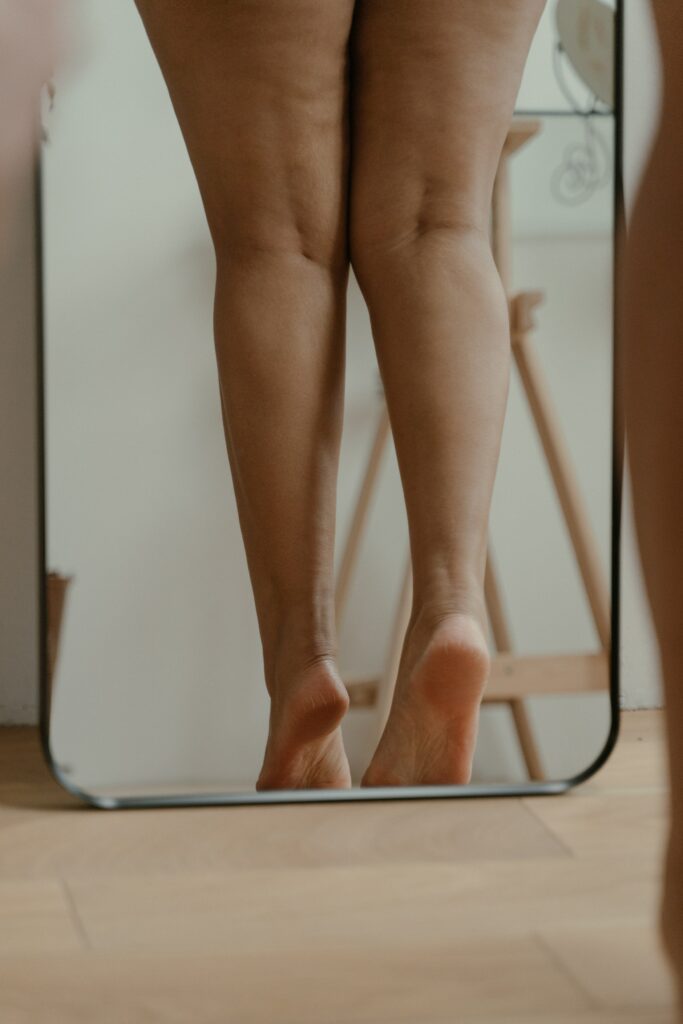As the season for shorts and bathing suits approaches each year, cellulite tends to become a cause for concern among many women. Despite efforts to embrace body positivity, cellulite remains a common issue that many would prefer to avoid. So, let’s explore ways to address it!
What is cellulite?
Firstly, it’s important to understand what cellulite is. Cellulite is caused by swollen fat deposits that push through weakened connective tissue in the skin, resulting in a dimpled appearance. It is commonly seen around women’s thighs and buttocks.
Cellulite affects a vast majority of post-adolescent females, with 80-90% experiencing it. While weight can be a contributing factor, cellulite can affect people of all body sizes.
Women are more likely to develop cellulite than men due to natural differences in body fat distribution, with women carrying more fat in areas such as the abdomen and pelvis. Additionally, women have less supportive connective tissue, which is necessary to accommodate the stretching of the skin during pregnancy.

What causes it?
Cellulite is the result of a combination of genetics, aging, and lifestyle factors.
Genetics play a significant role in determining how much cellulite a person will have, relative to their lifestyle. As we age, hormonal changes weaken the connective tissue in our skin, resulting in looser skin and increased visibility of underlying fat deposits.
Lifestyle choices also contribute to the development of cellulite by affecting the amount of fat stored in the body. Larger fat deposits put more pressure on weakened skin, making cellulite more noticeable. A poor diet, such as the Standard American Diet, and lack of exercise can lead to excess body fat.
Furthermore, fat cells can also swell due to the accumulation of toxins in the body. Toxins are stored in fat cells as a protective measure to prevent harm to vital organs. The more toxins the body takes in, the more the fat cells swell, which can impede their healthy function and make it more difficult to burn fat.
How to get rid of unwanted cellulite?
Exercise regularly
Aim for a well-balanced fitness routine that includes both cardio and strength training exercises. This can help decrease excess fat and tone muscles in cellulite-prone areas, which helps to tighten the skin.
Drink plenty of water: Staying hydrated helps flush toxins from your body, keeps your connective tissue flexible, and maintains a healthy weight.
Eat a balanced diet
Focus on fresh fruits and vegetables, whole grains, healthy fats, and organic, ethically raised animal products. Avoid processed, refined foods and foods high in sugar.
Limit exposure to toxins
Eat organic, non-GMO foods, use chemical-free personal care and cleaning products, don’t smoke, and pay attention to your indoor air quality.
Sweat it out
Sweat is one of your body’s main mechanisms for removing toxins. Try going antiperspirant-free and use an all-natural deodorant instead. Make sure you get sweaty regularly, either through physical activity or by visiting a sauna.

Dry brush
Dry brushing stimulates the lymphatic system, helping to flush toxins from your body, and stimulates circulation to the skin, which helps to repair and strengthen tissues and improve skin firmness.
Moisturize healthfully
Use a healthy, all-natural moisturizer with skin-firming ingredients like coconut oil or almond oil to repair underlying connective tissues and keep them healthy and flexible.
Relax and think positively
Manage stress levels by practicing meditation, exercise, gratitude, or CBD supplementation, as stress can trigger more fat storage and limit the body’s healthy functioning.



